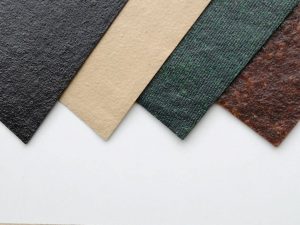
In recent years, the leather industry has been reviving its previous reputation. Leather has made a good comeback not only in fashion but also in many other areas, such as non-clothing luxury goods, which has also benefited nature. Leather is still one of the most popular options in car interiors. However, the use of this substance is under intense pressure and scrutiny.
Critics and people who have campaigned to protect animal rights have targeted the popularity of leather and created negative aspects for it. Although their arguments have not always been justified and acceptable, one can look at this critical view from another perspective and consider the issue of transparency in it.
The leather industry, especially in the automotive leather industry, has worked hard to do its job well, to provide transparency, and to provide quality products that are even higher than current standards. However, due to the increasing global demand for access to knowledge and information and the need to be aware of the origin of materials and products, there is a need for greater transparency in the leather industry, especially in relation to the origin of leather and its place of production.

About billions of livestock are raised around the world to produce food. It is an interesting fact that the consumption of meat is growing and the tendency to do so has more than doubled in the last half century. This statistic is in the context of new and different trends in the field of health and nutrition, but the trend of interest in meat has been growing.
Apart from this leather, it has an obvious and inseparable connection with the meat industry and is one of its most important by-products. In general, 95% of slaughtered animal parts are used effectively. The skin is one of the most important parts of this, which eventually turns into leather. One hundred percent of the components and parts of animals that are slaughtered in order to use their skin for the leather industry are used and nothing is thrown away from their body parts.
Basically, these animals are slaughtered to eat their meat. This means that the leather industry’s dependence on the meat industry has created a one-way street. Interestingly, most of these critics use meat, but avoid other by-products of the industry. As a result, large parts of slaughtered animals may not be used properly or may not be converted into by-products at all.
One downside is that slaughterhouses are mostly more economical and try to keep costs down. For this reason, refrain from spending more on producing by-products and leave animal skins in landfills and dumps. This procedure is basically a waste of a practical product, and we all know that almost all parts of slaughtered animals can be used.

Today, when consumers choose and buy products that they need to eat and use for other purposes, they address their concerns about environmental issues and make choices based on them. Their choices seem to be largely emotional, not knowledge-based. But are alternatives to real leather just a fleeting feeling?
Tesla, one of the major players in the car market, has taken a stand on the materials used in its products. Elon Musk, the company’s director, wants to produce a car that is all about plants. But have we ever wondered what that means? Unfortunately, we often don’t think about these issues. There are many products that use natural materials and may use cork, pineapple leaves, apple peel and other such materials. But do any of these substances affect the environment?
Much of the marketing of these products is based on the fact that these are materials to replace natural leather. These materials are made of PVC as well as polyurethane. These are not new materials and have been used for decades. Rarely can they be called environmentally friendly and sustainable materials. That’s why natural materials like leather are still attractive. The point to keep in mind is that sustainable materials are made with the latest green technology. Some customers prefer to buy products that use PVC or polyurethane in order to reduce purchase costs.
Although leather products are more expensive, they are a more sustainable choice that are readily available. Due to the increased demand for meat, there is a lot of skin and it can be easily turned into leather. The leather industry has been trying to open a new page in recent decades and take responsibility for environmental issues.
Consumers who feel responsible for the environment and strive to maintain it have not only revised their diet and turned to vegetarianism, but have also revised their clothing and avoided wearing products made of leather. Animals are produced, they refuse. Some have turned to synthetic products or natural alternatives.
These products are generally known as synthetic or faux leather. Even Tesla is set to introduce a “completely vegan” car. These leather substitutes are cheaper. But the question is, are these products better and more beneficial for the planet?
Sometimes contradictory words are used together that actually refer to a variety of products. Instead of raw cowhide and sheepskin, PVC and polyurethane are used in the production of synthetic leather. But there are other alternatives to these materials, such as cork, tree bark, pineapple leaves or apple peel.
Manufacturers of these alternatives say that their products are equal to natural leather and are similar. But these products, or synthetic leather, unlike natural leather, do not get better over time and are harmful.
Leather-like products that do not cause harm to animals, especially among young people in countries such as the United States and the United Kingdom, have become very popular. Environmental concerns have led to many customers buying real meat substitutes.
It seems that in countries like the United States, the tendency to buy these products has increased. This trend is partly due to a campaign launched in the fashion industry and supported by companies. In the first half of 2018, as well as in the first half of 2019, the supply of vegan leather products in the United States increased by 54% and more than doubled in the UK.
The demand for synthetic leather in the shoe industry is much higher than in other sectors. Americans tend to have their shoes made from products that do not have any traces of animal skin on them. But this trend is declining among Americans.
This trend intensified after Tesla asked its shareholders and partner companies to follow in their footsteps and use leather goods. According to Grand View Research, the shoe and car industries are likely to be the two main drivers for expanding the use of synthetic leather and increasing global demand.
The trend is expected to be 7% per year, and in 2025, the volume of synthetic leather transactions will reach $ 45 billion. At the same time, natural leather is expected to increase by $ 1,955.4 billion by then.
Plastic-based alternatives to natural leather are often cheaper. They are even easier to maintain. That’s why carmakers have shown interest. Vegan leather is made from organic materials such as pineapple leaves and is much more expensive to produce than synthetic alternatives. But in any case, they are cheaper than natural leather. At the same time, there are doubts about the durability of vegan leather. This type of leather is thinner than natural leather. Natural leather can last for many years. But there isn’t no such thing as a free lunch.
It’s hard to say that plastic loves the environment. PVC, which is widely used, releases dioxin. This is a dangerous substance indoors, especially if there is a fire. But vegan leathers such as Pinatax (made from pineapple leaves) and Epilepsy (made from apple skin) can be turned into fertilizer.
Another point is that synthetic leather is often made of oil, but synthetic leather is a by-product of the meat industry that is thrown in the trash if the skin is left unused.
No, but other leathers that have been donated are the product of new initiatives. This type of leather is popular with those who have reduced their meat consumption. On the other hand, companies that try to produce products for the general public say that their goal is to produce materials that are accessible to all that are sustainable, which unfortunately is not the case.
Demand for red meat in the United States has risen sharply. For this reason, the supply and storage of raw skin shows a significant increase. This means that a large part of it is wasted and even goes to the graveyard of waste and garbage collectors, leather activists have called this situation (unimaginable). On the other hand, the risk of waste and material waste in the leather industry is high because raw skins do not meet the standards required to become leather due to their shortcomings.